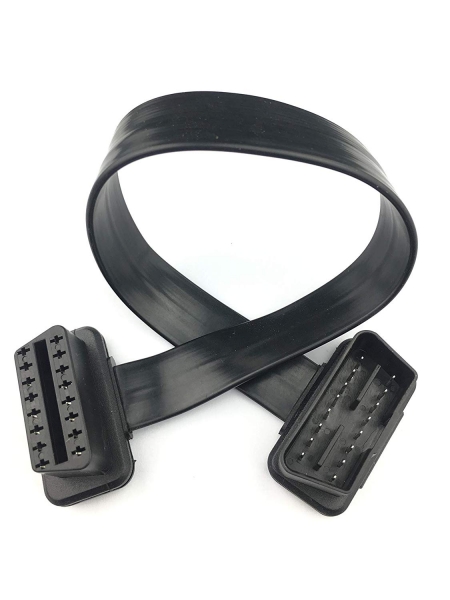OBD2 flat extension cable: function and principle
With the continuous development of automotive technology, on board diagnostic systems (OBD) have become standard equipment for modern vehicles. The OBD2 flat extension cable, as a tool for connecting vehicle diagnostic interfaces with external devices, has brought great convenience to the field of automotive maintenance, testing, and modification. This article will provide a detailed introduction to the function, principle, and application of OBD2 flat extension cable.

1、 The Function and Significance of OBD2 Flat Extension Cable
The OBD2 flat extension cable is mainly used to connect the vehicle's OBD interface with external diagnostic devices, such as laptops, tablets, or specialized automotive diagnostic devices. Through this cable, technicians can read vehicle fault codes, real-time data streams, and other relevant information, thereby quickly and accurately locating the fault location and improving maintenance efficiency. In addition, the OBD2 flat extension cable can also be used for remote monitoring and debugging of vehicles, as well as providing data transmission interfaces for other onboard devices.
2、 Basic concepts and characteristics of OBD2 flat extension cable
The OBD2 flat extension cable is a type of connecting wire that meets the OBD2 standard, usually using a 16 pin or 9 pin interface, and has characteristics such as waterproof, dustproof, and high-temperature resistance. The cable body adopts a flat design, which is easy to wire and not easily damaged. In addition, this type of cable also has a high data transmission rate and stability, which can meet the majority of automotive diagnostic needs.
3、 The working principle and implementation method of OBD2 flat extension cable
The working principle of OBD2 flat extension cable is mainly based on the vehicle CAN bus communication protocol. When external devices are connected to the vehicle's OBD interface, the vehicle's diagnostic system will transmit relevant data to the external devices, thereby achieving the reading and monitoring of vehicle information. In addition, sending control commands to the vehicle through external devices can also achieve remote control of certain functions of the vehicle.
